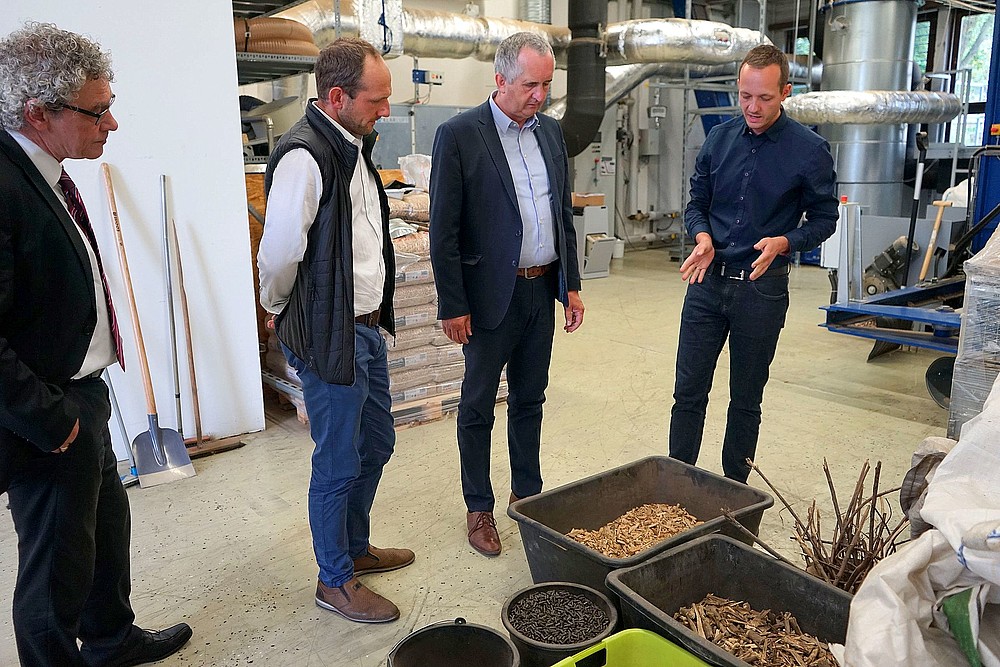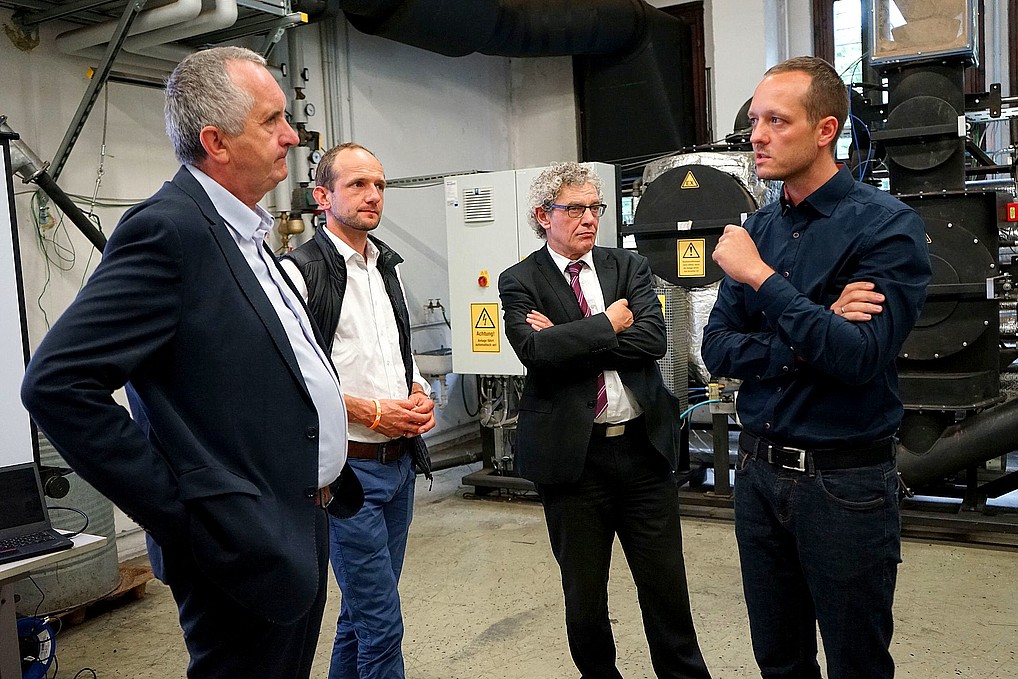On the evening of August 5, the Saxon State Minister for Agriculture and Environmental Protection learned about biomass use and heat storage.

Everyone knows that wood can be burned directly to generate heat. However, it is much more interesting to first use the wood to generate electricity and then use the inevitable waste heat for heating. The carbon dioxide released into the atmosphere during this process was absorbed from the atmosphere in equal quantities during the growth of the wood, so that electricity and heat can be generated in a climate-neutral way.
For several years now, the Zittau/Görlitz University of Applied Sciences has been working on optimizing the operating behavior of a so-called wood gas cogeneration plant with ERDF funding from the Free State of Saxony. The highly complex plant installed in Zittau uses waste wood - i.e. wood chips - as fuel. A fuel gas is produced from the dried wood chips at high temperatures and with a lack of oxygen in the gasifier, which is converted into electricity in its processed state in a combination of gas engine and generator. Both the engine exhaust gas and its cooling system provide the additional heat required for heating.
After being welcomed by Rector Professor Albrecht, Minister Thomas Schmidt and his companions listened with interest to the explanations of Dipl.-Ing. (FH) Salomo, one of the "first employees" of this working group. Mr. Salomo explained how the system works, its measuring equipment and the many years of operating experience, which has not only been positive. Numerous questions were discussed, such as the scalability of this principle for systems with significantly higher electrical and thermal output.
In addition, Prof. Meinert provided a brief overview of the research activities in the field of latent heat storage that are thematically linked to this system. Latent heat storage is an innovative heat storage technology in which the use of a melting/solidifying storage medium results in numerous advantages over conventional heat storage systems.
After the guests were able to experience a live warm start of the wood gas cogeneration plant, they left our university with hopefully many positive impressions of the impressive research potential in the field of sustainable energy technologies here in the region.
